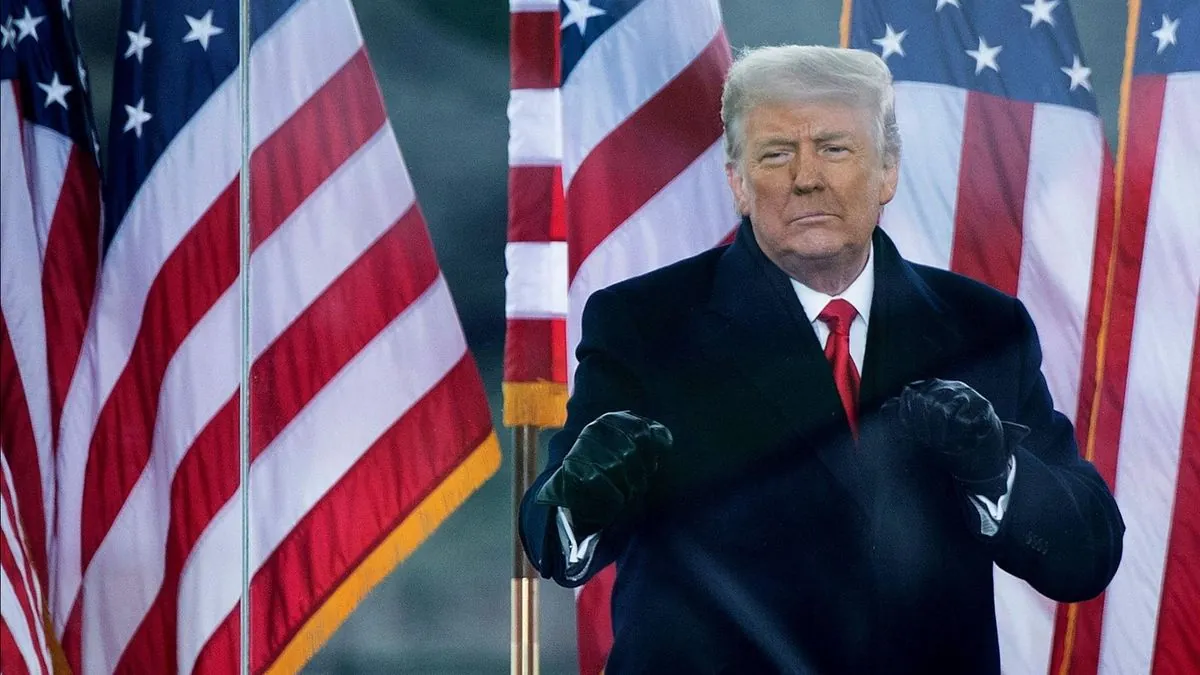Trump's Crowd Size Claims: A Tale of Two Speeches
Former President Trump's recent comparison of his January 6 rally to Martin Luther King Jr.'s March on Washington sparks debate. Analysis reveals significant differences in crowd sizes and historical impact.

In a recent press conference, Donald Trump made headlines by comparing the crowd size at his January 6, 2021 speech to that of Martin Luther King Jr.'s iconic March on Washington in 1963. This claim, made approximately 3 years and 7 months after the events at the Capitol, has reignited discussions about crowd sizes and their significance in political narratives.
Trump asserted that his audience on January 6 was comparable to, if not larger than, the crowd at King's famous "I Have a Dream" speech. However, a closer examination of available evidence and historical records suggests otherwise.
The March on Washington, which took place on August 28, 1963, is widely regarded as one of the largest political rallies for human rights in U.S. history. Estimates place the attendance between 200,000 and 300,000 participants, significantly lower than the million sometimes claimed but still a massive gathering for its time.

In contrast, while exact figures for Trump's January 6 rally are not available, visual evidence and eyewitness accounts indicate a considerably smaller crowd. The National Park Service, which manages both the National Mall and the Ellipse where Trump spoke, has not provided official crowd size estimates for events since 1995.
"The way that we would always try to build rallies out was long and narrow, because that made for a better picture."
This testimony sheds light on the strategic considerations behind rally layouts and the importance placed on visual perception of crowd sizes.
It's worth noting that the locations of the two speeches differ significantly. King spoke from the steps of the Lincoln Memorial, completed in 1922, while Trump addressed his supporters from the Ellipse, a 52-acre park south of the White House. The distance between these locations and the Washington Monument, a common reference point visible in photos of both events, varies greatly. The Lincoln Memorial is approximately 1 mile from the monument, while the Ellipse is only about a third of that distance.
Interestingly, photos from the 1963 March show temporary buildings known as "Tempo" buildings between the Washington Monument and the White House. These structures, remnants of World War II-era office space, were removed during the Nixon administration, with the last one demolished in 1970.
The legacy of these two speeches also differs markedly. King's address is remembered for its powerful message and its role in advancing civil rights legislation, including the Civil Rights Act of 1964 and the Voting Rights Act of 1965. In contrast, Trump's January 6 speech is primarily associated with the subsequent events at the Capitol.
As of August 2024, approximately 1,500 individuals have faced federal charges related to the Capitol riot, a stark reminder of the day's tumultuous aftermath.
In the end, while crowd sizes may be a point of contention, the historical impact and remembrance of these two events remain distinctly different, shaped by their respective contexts and consequences.


































